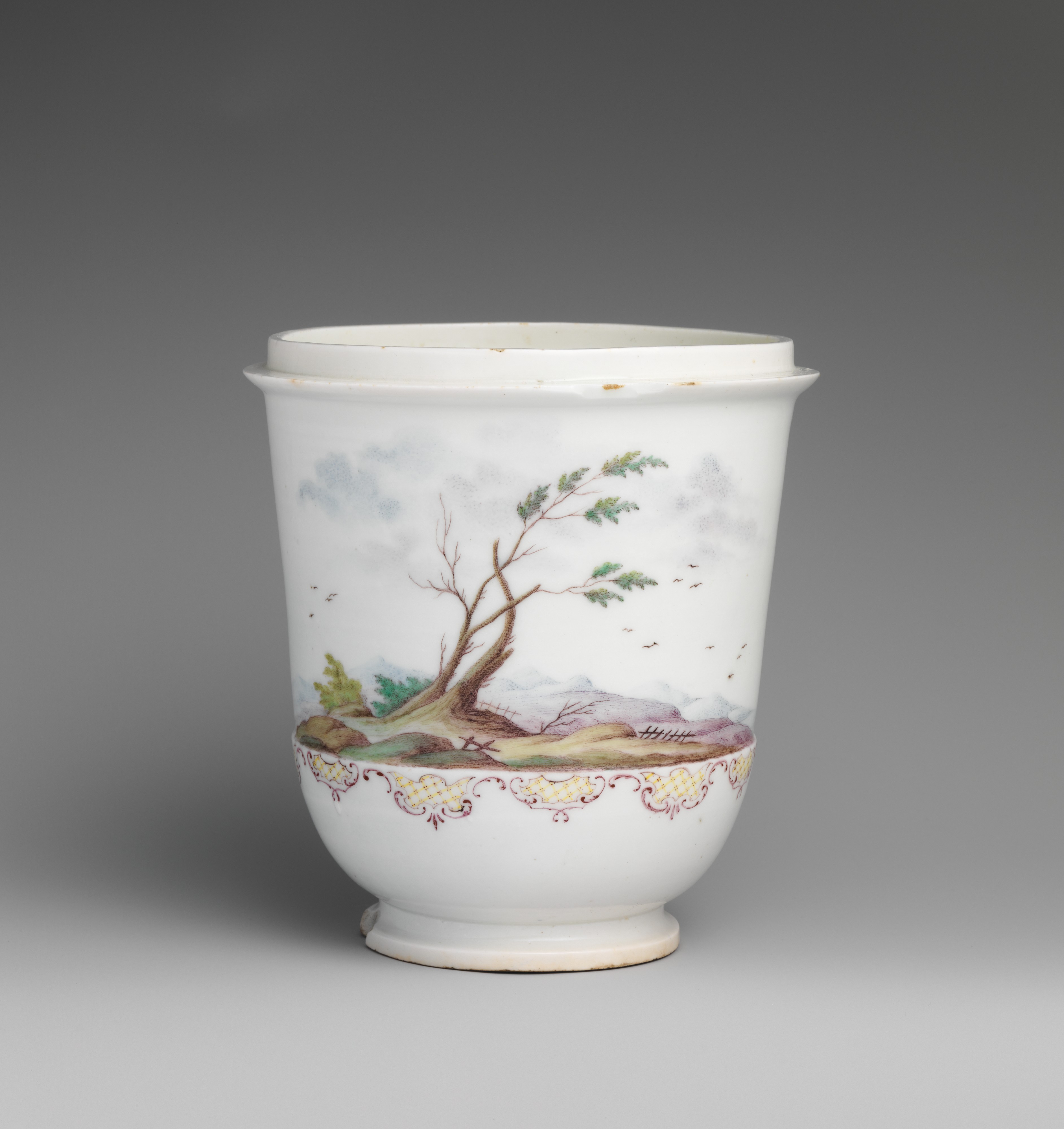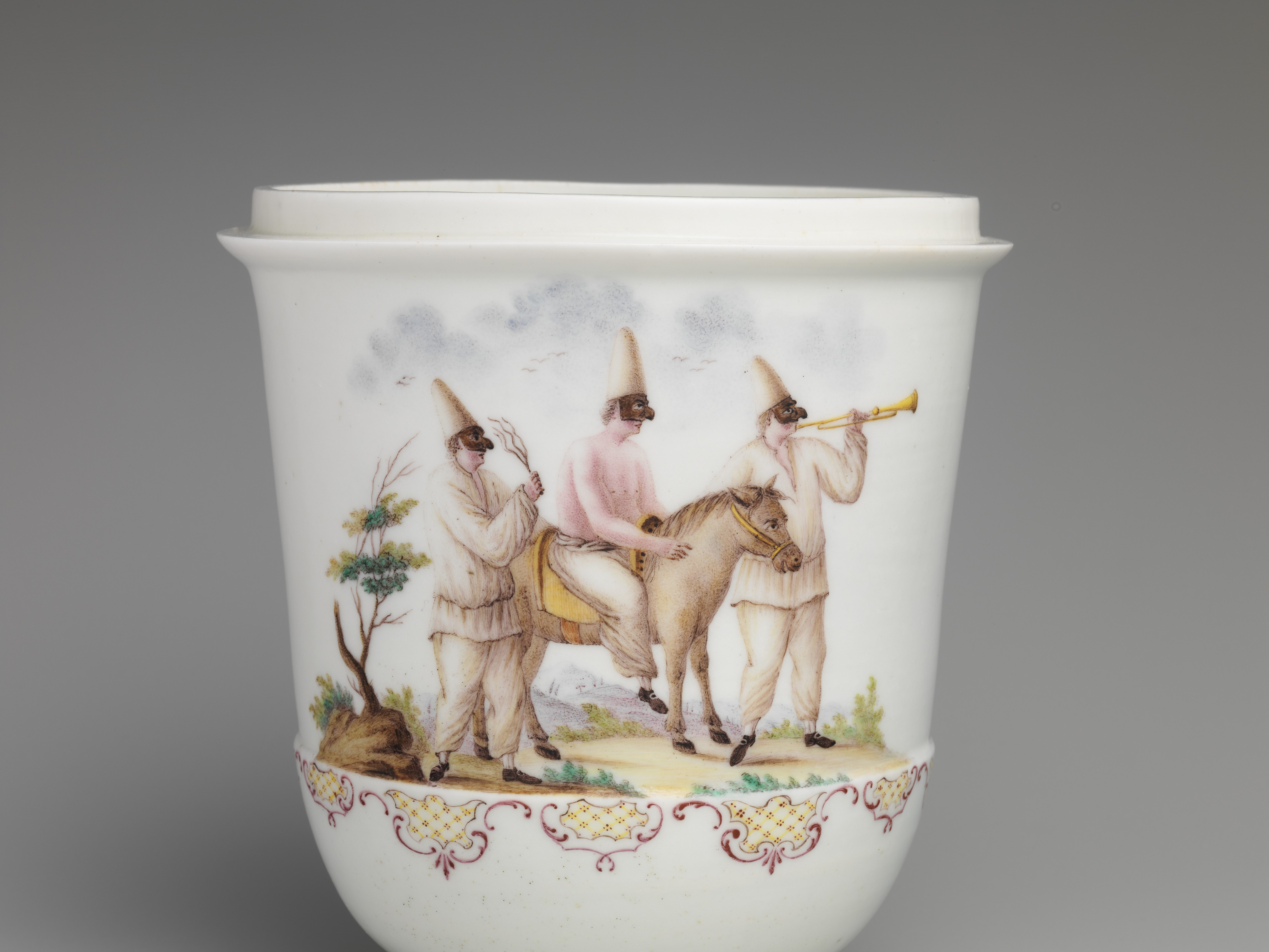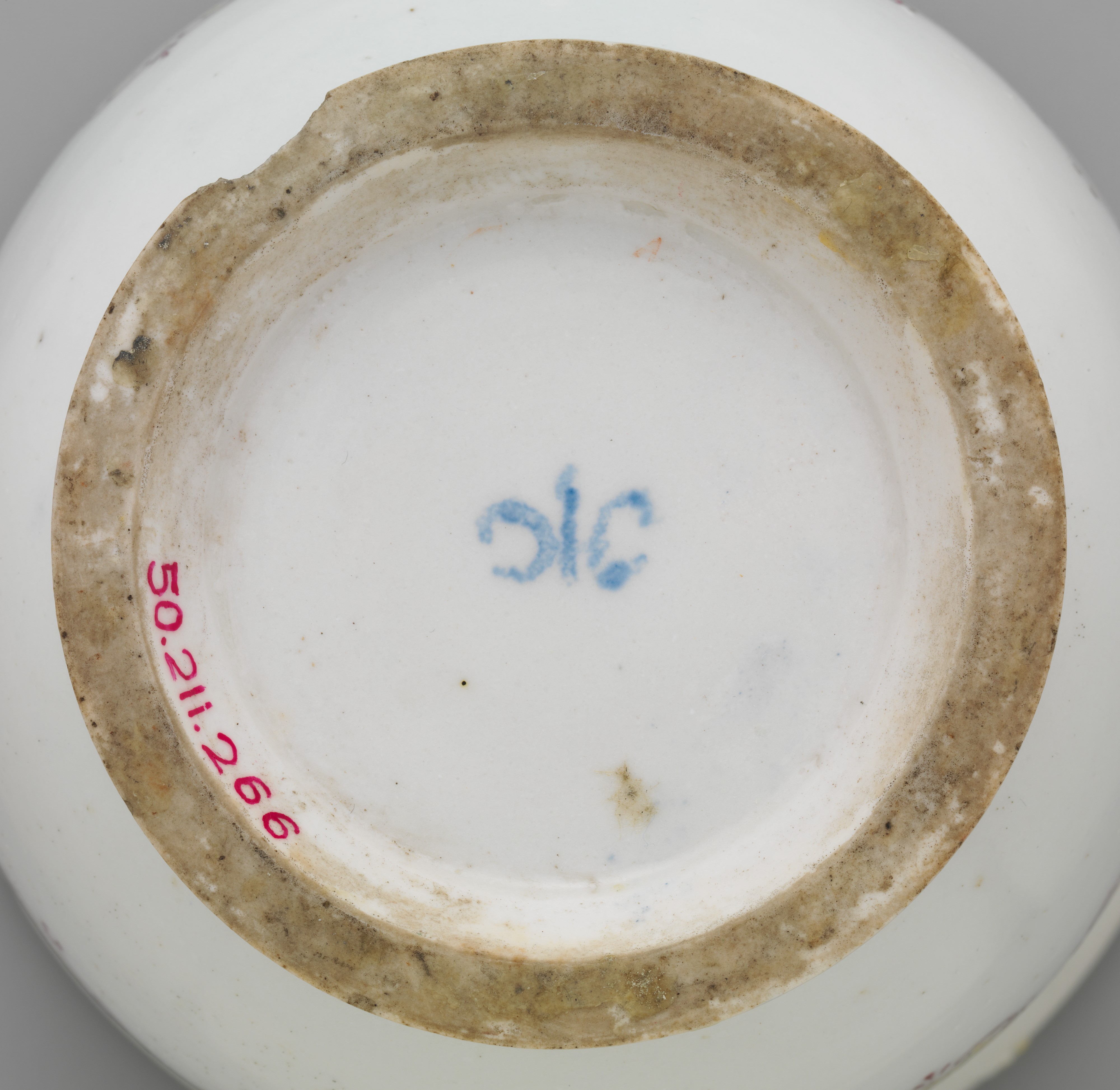Jar
Manufactory Capodimonte Porcelain Manufactory Italian
decoration possibly by Giovanni Caselli
Not on view
This jar or vase is one of the most enigmatic works produced at the Capodimonte factory in Naples. Unusually, its intended function is not clear. The projecting rim at the top indicates that originally it almost certainly had a cover, and the only other known example of this form has a similar rim but with a cover missing as well.[1] The somewhat squat form of the jar, coupled with the evidence of a cover, might indicate that it was intended to serve as a tobacco jar, but it would be an unusually large container for tobacco. Alternatively, the form might have served as a vase with an entirely decorative function; however, the shape is unlike any of the vases produced at Capodimonte or indeed elsewhere in Italy at that time.
The enigmatic quality of this object extends to the significance, if any, of its painted decoration as well. While the jar is decorated with what constitutes, more or less, a continuous landscape, there are clearly a primary and a secondary scene. The former consists of three figures, each depicting the character of Pulcinella from the commedia dell’arte. Pulcinella was a wily and licentious Neapolitan servant,[2] and his frequent role was to serve as a companion to Harlequin, one of the primary characters in this form of popular street theater. Pulcinella’s traditional outfit of a loose tunic worn over ample trousers, a tall conical hat, and a mask with a prominent nose made him immediately recognizable to viewers familiar with the commedia dell’arte. In the principal scene on the jar, the three figures dressed as Pulcinella move through a semi-desolate landscape. The lead figure plays a trumpet, the bare-chested Pulcinella in the center rides a donkey, and the third figure carries a short branch that may represent a switch with which to prod the animal. The three figures inhabit a landscape defined by sparse vegetation, a stunted tree, and the absence of strong color. The landscape depicted on the other side of the jar is equally stark and dominated by a prominent tree that has lost most of its leaves set against a cloudy sky with small flying birds. The painter of the jar has skillfully created an environment that feels both abnormally still and vaguely disquieting. This has been achieved, in part, by the use of an unusually subdued palette dominated by pale browns, muted greens, off-whites, and a pale violet.
The meaning of the actions in which the three Pulcinellas are engaged is unclear, either individually or as a group. While it may seem surprising to include three figures who each represent Pulcinella in one composition, it was not uncommon in the mid-eighteenth century to depict more than one Pulcinella both in painting and in porcelain sculpture groups.[3] In this instance, the three figures are not truly engaged with one another but rather seem to form a procession, the significance of which is not made explicit. The almost haunting aspect of the painted decoration is due not only to the skill with which it is painted but also to the stippling technique employed by the painter, which lends itself very effectively to atmospheric effects. This style of painting at Capodimonte is commonly associated with Giovanni Caselli (Italian, 1698–1752), the director of the factory. Much of the best painting executed at Capodimonte has been attributed traditionally to Caselli’s hand, but recent scholarship suggests that Caselli, who also served as the head of the painting workshop, established the factory’s signature style, yet within that style it is difficult to attribute specific works with any certainty.[4] Nevertheless, it appears almost certain it was due to Caselli that the Capodimonte factory developed a style in which stippling was exploited in order to achieve decoration of uncommon delicacy with a sense of heightened atmosphere.
On this particular jar, both the delicacy of the painting and the palette of enamels are enhanced by the pronounced warm, off-white color of the soft-paste body. While the paste produced at Capodimonte was typically warm in tone, the body used for this jar is notably off-white, and the jar is further distinguished by the satinlike finish of the glaze. It is unlikely that the slightly more matte quality to the glaze was deliberate, but the less glassy surface in combination with the warm tone of the paste make the jar uncommon among Capodimonte porcelains and provide an appeal that aligns with a present-day appreciation of the imperfect in a factory’s early production.
Footnotes
(For key to shortened references see bibliography in Munger, European Porcelain in the Metropolitan Museum of Art. NY: The Metropolitan Museum of Art, 2018)
1 Emerson, Chen, and Gates 2000, p. 146, pl. 11.8.
2 Chilton 2002, p. 223.
3 See ibid., pp. 223, 226–27, figs. 1, 6, 8. See also the painting by Alessandro Magnasco (Italian, 1667–1749), Pulcinella Singing with His Many Children, ca. 1725–30, in the Columbia Museum of Art, Columbia, S.C. (1954.42).
4 Carola-Perrotti 2013, p. 209.
Due to rights restrictions, this image cannot be enlarged, viewed at full screen, or downloaded.
This artwork is meant to be viewed from right to left. Scroll left to view more.





